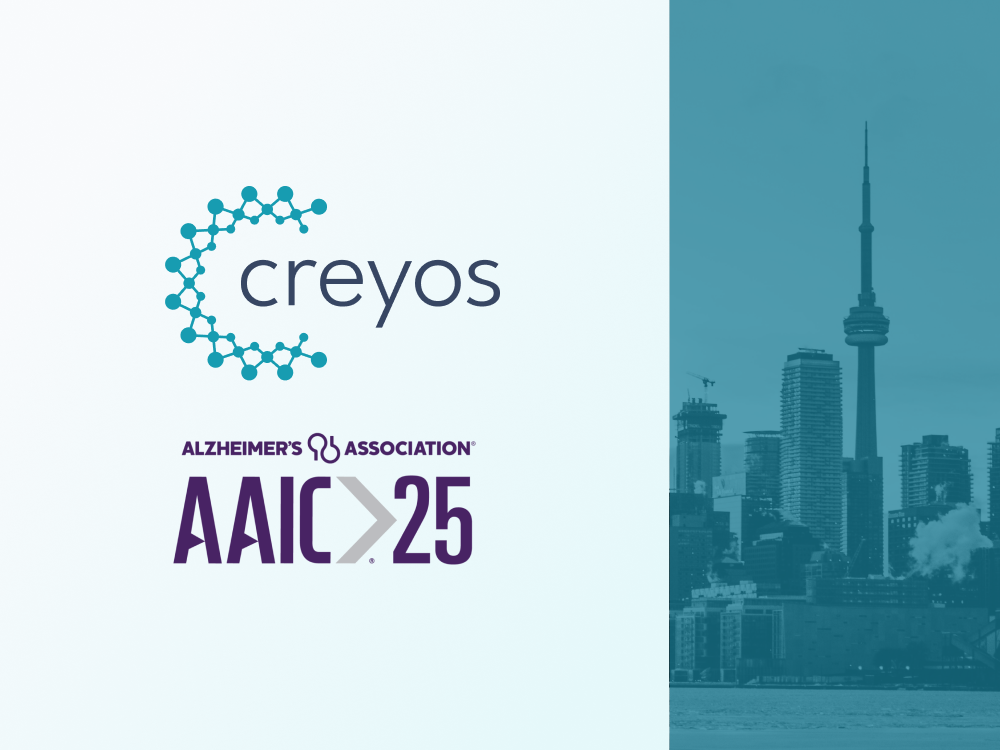
AAIC 2025: Exploring The Future of Dementia Care
Published: 08/08/2025 | 3 min read
Written by: Mike Battista, Director of Science & Research
The Creyos team was lucky enough to attend the Alzheimer's Association International Conference (AAIC) 2025 in Toronto. The event was filled with thought-provoking insights, exciting research, and new recommendations from the Alzheimer’s Association (AA) that directly impact the future of dementia care and diagnosis.
One key theme carried through the week—early and accurate detection are of the utmost importance to both patients and their care teams. There is significant momentum for early diagnosis, especially in asymptomatic individuals with emerging biomarker research.
The week also brought with it new recommendations from the AA, which previewed new clinical practice guidelines explicitly recommending against the MoCA in primary care, and instead favoring more accurate and useful testing methods.
Goodbye MoCA?
The AA was very clear at AAIC 2025: the MoCA is falling behind. After expressing dissatisfaction with traditional screeners like the MoCA and Mini-Cog for the purpose of triaging in primary care, the organization announced new clinical practice guidelines favoring the AD8 and the SLUMS instead. This was a potentially controversial announcement, since the MoCA has been the default screener for many providers for years.
According to the new recommendations, ideal tool replacements should be:
- Highly accurate
- Able to account for patient values
- Helpful in guiding clinical next steps
- Easy to administer
- Low in cost
- Culturally equitable
- Simple to implement in primary care
It's worth noting that in its analysis, the AA did not examine digital tools due to a lack of comparative research. In fact, digital tools may very well be the future of dementia screening, meeting most, if not all, of the recommendations for modern testing. Even with a need for further evaluation, digital screeners were acknowledged at the conference as the future, especially for detection, triage, and support. It's clear the winds are shifting, and the MoCA is starting to go cold.
Early Detection via Biomarkers
AAIC 2025 highlighted a huge movement towards early detection and an explosion of companies developing tools for doing this through blood biomarker detection. There is a growing increase in the focus on the biology of Alzheimer's disease with the hopes that biomarkers in the blood can help detect and diagnose the disease earlier.
It seems that in 2025, blood-based biomarkers may finally be in reach. This would mark a major advancement in Alzheimer’s detection, allowing providers to potentially move beyond expensive PET imaging and invasive lumbar punctures. This new research brings hope that blood tests may soon make their way into neurology and even primary care.
This advancement is not without trepidation from some experts. Can these tests be fully validated? And is the healthcare system ready for such a large change?
It also raises the question, can biological markers provide diagnostic value even in the absence of behavioral symptoms, or will cognitive testing always play a role in diagnosing Alzheimer’s disease?
What is clear is that cognitive testing remains a critical need for both diagnosis and treatment. For example, even in a world with widely available blood biomarker testing, cognitive assessments would be needed for:
- Interpreting biomarker results in the proper context
- Monitoring severity and progression
- Detecting when the disease becomes symptomatic
When Can and When Should Providers Diagnose?
There is great debate about when during the course of Alzheimer’s disease it should be diagnosed. With the emergence of promising methods for early detection through biomarkers, when does the label of Alzheimer’s disease become accurate and helpful to patients and providers?
While we don’t yet have an answer to that question, we can say for certain that at all stages of the disease, be it in asymptomatic individuals who need monitoring or in those with advanced illness, cognitive testing is relevant and necessary. In cases of individuals presenting with a genetic predisposition or biological marker that suggests monitoring for future cognitive impairment, cognitive testing may be particularly important as early detection and diagnosis mean earlier treatment intervention.
Key Takeaways:
- There is widespread dissatisfaction with traditional screeners like the MoCA, Mini-Cog, and MMSE—many experts agree that these screeners are outdated and insufficient.
- There's momentum behind early diagnosis, especially in asymptomatic individuals with biomarker-based signs of AD.
- Blood-based biomarkers for AD are nearing clinical readiness and could be a game-changer, although concerns remain around interpretation, standardization, and clinical readiness.
- At AAIC, digital screeners were acknowledged as the future, especially for detection, triage, and support.
The Future of Dementia Care
Digital, remote cognitive screening tools are the future. New guidelines announced at AAIC 2025 highlighted the need for assessments that take less than 15 minutes to complete without compromising accuracy and ease of use. These tools for detection, triage, and diagnostic support remain critical—even in a world embracing blood tests for Alzheimer's.
In clinical practice, assessments will always be needed to measure the progression of the disease and to determine if it is symptomatic or not. Providers can also use cognitive assessments to put blood tests in context, helping to interpret results and increase confidence in clinical decisions about diagnosis or treatment.

Written by Mike Battista, Director of Science & Research at Creyos
Mike Battista specializes in brain health, cognition, and neuropsychological testing. He received his PhD in personality and measurement psychology at Western University in 2010 and has been doing fun and useful stuff in the intersection between science and technology ever since.

